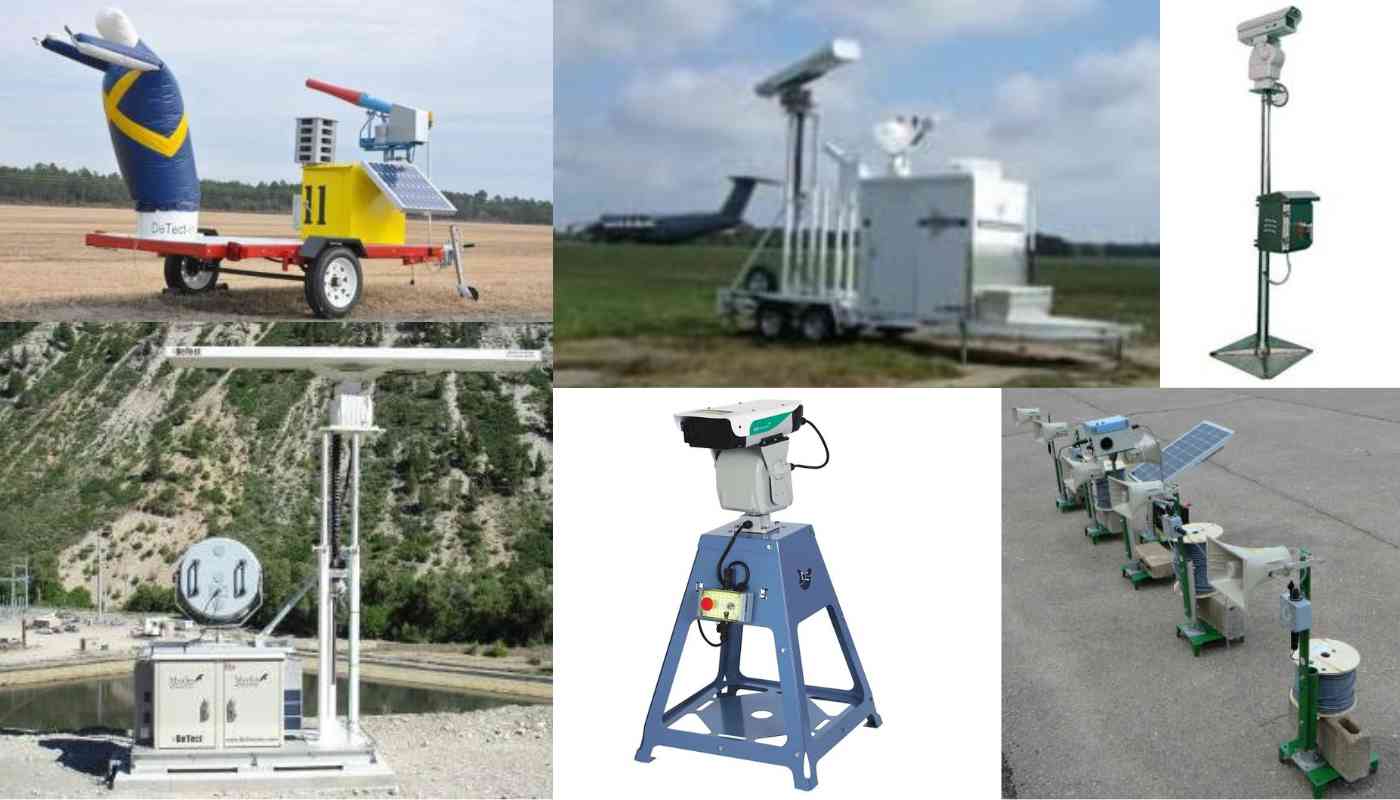Bird Control Systems and Acoustic Bird Scarer in USA in 2024
Imagine this: you’re hurtling down the runway, the mighty engines of your airplane roaring, anticipation for your journey bubbling over. Suddenly, a flash of feathers streaks across the windshield. A bird strike! Thankfully, such incidents are rare, but they pose a significant threat to both aircraft and wildlife. This is where the fascinating world of bird control systems comes in, and acoustic bird scarers are taking center stage in the USA (2024).

Why Bird Strikes Matter
Bird strikes cost the aviation industry millions of dollars annually, not to mention the potential for human injury. The FAA (Federal Aviation Administration) takes avian hazard mitigation (aviation) very seriously. Wildlife biologists meticulously craft wildlife management plans (airports) to identify and address potential bird strike risks. These plans often incorporate a multi-pronged approach, including:
- Habitat Modification: This involves altering the landscape around airports to make it less attractive to birds. Think removing nesting sites, managing vegetation, and creating buffer zones.
- Airport Bird Control Regulations: These regulations dictate everything from waste management practices to specific bird control techniques allowed within airport perimeters.
- Bird Deterrent Systems: Here’s where things get interesting!
Exploring Bird Control Systems
Airports across the USA (2024) are deploying a diverse arsenal of bird control systems to keep our skies safe. Let’s delve into some of the most popular methods:
- Acoustic Bird Scarers: These emit distress calls, predator sounds, and other noises that send birds packing. Modern acoustic scarers are often programmable, allowing for variation in sounds to prevent habituation (birds getting used to the noise).
- Laser Bird Deterrents: Imagine a harmless beam of light creating a virtual fence that birds dare not cross. Laser bird deterrents use precisely targeted pulses of light to startle and disorient birds, effectively pushing them away from runways and other sensitive areas.
- Radar Bird Tracking: This technology provides real-time information on bird activity near airports. Wildlife Biologists use radar bird tracking systems to pinpoint areas of high bird concentration and deploy targeted deterrents accordingly.
- Water Cannons: For stubborn waterfowl like geese, a strategically timed blast of water can be a highly effective deterrent. Water cannons are often automated and triggered by radar or visual detection systems.
- Drone Bird Control: Yes, you read that right! Drones equipped with flashing lights, sirens, and even predator silhouettes are being used to haze birds away from airports. This innovative approach is still under development but shows promise.
A Humane and Effective Solution
Among these methods, acoustic bird scarers are gaining significant traction in the USA (2024) due to several factors:
- Humane: Acoustic bird scarers rely on sound, not physical harm, to deter birds. This aligns perfectly with the growing public concern for animal welfare.
- Effectiveness: Modern acoustic bird scarers can be highly effective, especially when combined with other bird control techniques. Studies have shown significant reductions in bird activity near airports using these systems.
- Cost-Effective: Compared to some other bird control methods, acoustic bird scarers offer a cost-effective solution. They are relatively inexpensive to install and maintain.
- Versatility: Acoustic bird scarers come in various sizes and configurations, making them suitable for a wide range of applications, from small airports to large commercial hubs.
The Broader Reach of Bird Control Systems
While airport safety is paramount, bird control systems have applications far beyond the runway. Here are some other sectors where these systems are making a difference:
- Agriculture: Farmers can use acoustic bird scarers and other deterrents to protect their crops from pesky birds.
- Industrial Sites: Warehouses, factories, and other industrial facilities can deploy bird control systems to deter birds from nesting and causing damage to property.
- Urban Areas: Public parks, plazas, and even residential areas can benefit from bird control systems to manage unwanted bird populations and the associated mess and noise.
Innovation Takes Flight
The world of bird control systems is constantly evolving. Here are some exciting trends to watch in the coming years:
- Integration of Artificial Intelligence (AI): AI-powered systems are being developed to analyze bird activity patterns and automatically deploy targeted deterrents.
- Advanced Bio-Acoustic Technology: Researchers are exploring the use of even more sophisticated bio-acoustic calls to deter birds more effectively.
- Environmentally Friendly Solutions: The development of solar-powered bird deterrents and biodegradable control methods is gaining momentum.
FAQs
What are some common bird control systems used at airports in the USA?
Airports in the USA utilize a variety of deterrents to keep birds away, including acoustic bird scarers that emit distress calls, laser bird deterrents that project harmless light beams, and radar bird tracking systems that pinpoint areas of high bird activity.
Why are bird control systems important for airports?
Bird strikes pose a significant threat to aircraft safety and can cause millions of dollars in damage. Bird control systems help to prevent these incidents and ensure the safety of passengers and crew.
Are acoustic bird scarers humane?
Yes, acoustic bird scarers are a humane method of bird control. They rely on sounds, like predator calls and distress signals, to deter birds without causing them any harm.





